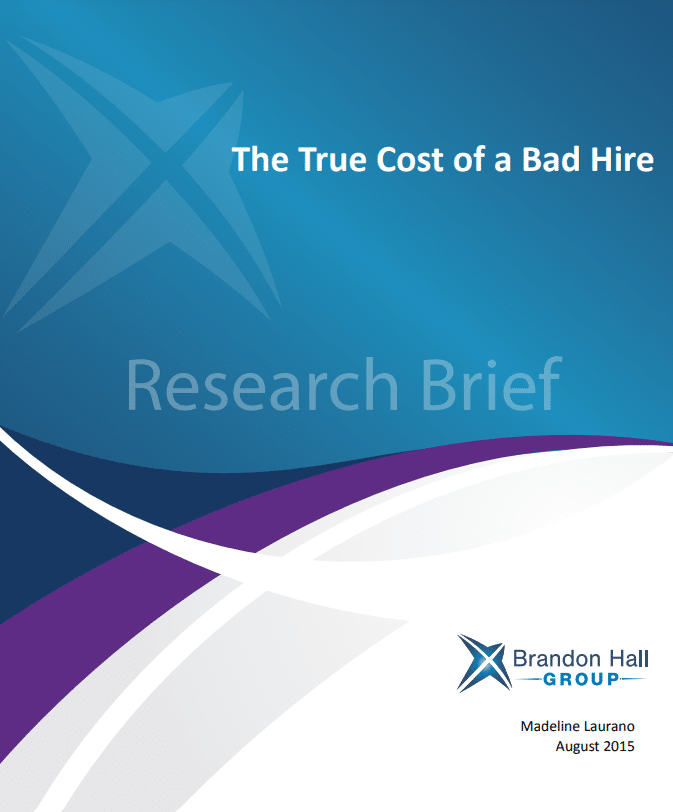Chatbots have become a hot topic. An interesting study showed that there have been more than 1.2 million mentions of AI chatbots recently, which means their popularity is only growing. In 2028, the chatbot industry is predicted to be worth $9.4 billion, with an annual growth rate of 29.7%. According to Precision Reports, the HR chatbot market is expected to experience substantial growth from 2023 to 2030, with an estimated CAGR of 22.4%.
This indicates that HR chatbots will become essential to human resource management in the coming years.
But what exactly are these chatbots, and why are they gaining so much attention? As more people turn to remote work and companies look to streamline their processes, the use of these chatbots is becoming increasingly prominent.
This article will explore what HR chatbots are, how they are being used in 2024, and the benefits of using them in human resource management.
What Are HR Chatbots?
Evaluating numerous resumes, managing administrative duties, and fostering candidate relationships are significant challenges that require substantial Human Resources (HR) effort and resources. To address these challenges effectively, many companies are turning to HR chatbots.
HR chatbots are AI-powered digital assistants designed to interact conversationally with employees or candidates, just like a human. They can be integrated into communication platforms such as Slack or Microsoft Teams or even embedded on company websites. Companies can customize their human resource chatbot to fit their needs and provide personalized responses to employees or candidates. Now, let’s see what chatbots can tackle HR operations, communication, and recruitment tasks.
Use Cases of HR Chatbots in 2024:
The use of human resource chatbots is not limited to one specific area but spans various aspects of human resource management. Here are some examples of how human resource chatbots are being used in 2024:
Recruitment:
This is the hardest and most time-consuming aspect of HR, requiring reviewing numerous resumes, scheduling interviews, and interacting with candidates. These AI chatbots take the lead, and the recruitment process becomes a breeze. These AI-powered assistants can screen resumes in minutes, identify top candidates, and even schedule interviews without hassle.
According to the HR and recruitment statistics compiled by OnHires in 2023, “52% of recruiters identify screening candidates from a large pool of applicants as the most challenging aspect of the recruitment process.”
Imagine a 24/7 recruiter who never takes a break—efficient, reliable, and capable of enhancing the candidate experience by providing instant feedback and answering any queries applicants may have.
Moreover, chatbots ensure every candidate feels valued, reducing the chances of losing top talent due to delayed interactions. In 2024, HR chatbots are revolutionizing recruitment, allowing HR professionals to shift their focus to more strategic tasks. With chatbots handling the grunt work, companies can maintain a competitive edge in the talent acquisition race, filling positions quickly with the best-suited professionals.
This seamless integration boosts hiring efficiency and strengthens your employer brand, promoting your company as a forward-thinking, innovative workplace.
Employee Communication:
Effective communication is the backbone of any successful organization, and chatbots set new standards. Imagine an always-available, AI-powered assistant facilitating seamless interactions between management and staff.
HR chatbots quickly address employee inquiries, from payroll questions to benefits clarifications, ensuring no query goes unanswered. This instant support system boosts employee satisfaction and frees up valuable time for HR professionals to focus on strategic initiatives.
Interestingly, virtual assistants can also be integrated into internal communication platforms, making it easier for employees to share important company updates and policies.
Onboarding and Offboarding:
The onboarding and offboarding process can be long and tedious, often involving numerous forms, documentation, and multiple interactions with HR. However, HR chatbots can significantly smoothen this process. These AI-powered assistants can guide employees through the necessary paperwork, provide information about company policies and procedures, and even assist in setting up accounts and system access.
Similarly, when it comes to offboarding employees, chatbots can help streamline the exit process by providing necessary information and guiding them through steps such as returning equipment or transferring responsibilities. This saves time for HR professionals and ensures a smooth transition for the existing employee and their team.

The True Cost of a Bad Hire
According to the Research Brief titled “The True Cost of a Bad Hire” by Brandon Hall Group, organizations that implement an effective onboarding process see an 82% improvement in new hire retention, alongside a productivity boost exceeding 70%.
How HR Chatbots Handle Tasks with Natural Language Processing
HR chatbots accomplish these tasks through natural language processing (NLP). NLP enables these digital assistants to understand and interpret human language, allowing them to interact with employees or candidates in a natural and engaging manner.
Depending on the complexity of the task and the organization’s needs, chatbots can be powered by advanced AI or use predefined templates to perform specific functions.
For instance, a job application template within an HR chatbot can streamline the process of collecting applicant details. When a candidate initiates a conversation, the chatbot can seamlessly guide them through each application step, ensuring all necessary information is captured accurately. The chatbot can prompt the candidate to input their name, contact details, educational background, and work experience, reducing the likelihood of incomplete applications.
The good thing is that technology is getting more sophisticated, and HR chatbots are continuously improving.
Major Benefits:
Though the use cases mentioned above are a testament to the impact of HR chatbots, let’s delve into more specific benefits they offer:
Time and Cost Savings:
The most obvious advantage of implementing an HR chatbot is its ability to save time and costs. As mentioned earlier, manual recruitment activities can be labor-intensive and time-consuming. By automating these processes with AI-powered assistants, organizations can significantly reduce the time spent on repetitive tasks, allowing HR professionals to focus on other strategic initiatives.
Enhanced Candidate Experience:
It’s not just about streamlining internal processes; chatbots also greatly improve the candidate experience. Quick and efficient interactions make the recruitment process more appealing, and candidates are less likely to abandon applications midway. Today, job seekers seek convenient, hassle-free experiences, and chatbots provide just that.
Increased Efficiency:
That is an obvious outcome of adopting technology. With HR chatbots taking on administrative tasks, HR professionals can focus on more strategic initiatives, boosting overall efficiency and productivity. This increased efficiency is reflected in faster hiring times and better employee satisfaction rates.
Personalized Interactions:
Using natural language processing, HR chatbots can offer personalized interactions with employees or candidates. They can understand individual preferences and tailor their responses accordingly, making the experience more human-like.
Key features for the HR Industry:
HR chatbots often come loaded with features specifically designed for the HR industry. These include resume screening, interview scheduling, employee evaluations, exit interviews, and more. By automating these functions, HR professionals can save time and effort while ensuring a seamless experience for employees and candidates.
Types of HR chatbots
Now, here comes the exciting part! Chatbots come in various forms, depending on their scope and capabilities. Let’s take a look at some of the common types:
- HR helpdesk chatbots: These are designed to assist with common HR inquiries and tasks, such as employee benefits, payroll, and company policies.
- Recruitment chatbots: These help streamline the recruitment process by assisting with job applications, pre-screening candidates, scheduling interviews, and more.
- Onboarding/offboarding chatbots: As mentioned earlier, these chatbots aid in employees’ onboarding or offboarding process. This makes the experience smoother for all parties involved.
- Feedback/evaluation chatbots: These chatbots collect and analyze employee feedback, helping HR professionals gain insights into their workforce’s satisfaction levels.
- Training chatbots: Designed to support employee learning and development initiatives through interactive training sessions or quizzes.
Examples of HR Chatbots in Use
Here are a few examples of organizations utilizing chatbots to improve their processes and enhance employee experience:
- Swiss-based Financial Services Provider Axa: The organization implemented an AI-powered chatbot named “Axa Assistant” to handle tasks such as onboarding, answering employee inquiries, and facilitating performance evaluations. With the chatbot’s help, Axa saw an 80% reduction in the time spent on administrative tasks.
- Unilever: This global consumer goods company uses a recruiting chatbot called “TARA” to automate the initial screening process for job applicants. By doing so, Unilever has reduced its recruitment lead time by approximately 70%.
- Hilton Hotels: The hospitality chain utilizes a chatbot named “Connie” to assist with employee training on company policies and procedures. This has not only improved the efficiency of their training process but also increased employee engagement and satisfaction.
Final Thoughts
As we have seen, chatbots are revolutionizing the way organizations approach human resource management. So, if you’re an HR professional looking to streamline your processes and improve overall performance, it’s time to consider implementing a human resource chatbot in your organization. Who knows, it might just become an essential tool in your arsenal for achieving success in the future!
But what if you could take your HR processes to the next level with a cutting-edge solution? Here comes Clepher—a state-of-the-art chatbot platform designed to transform your HR operations.
With Clepher, you can seamlessly integrate advanced AI chatbots into your workflow. It offers round-the-clock support and significantly improves employee and candidate interactions. Known for its user-friendly interface and robust features, Clepher makes it easier than ever to automate everything from recruitment to onboarding, ensuring a streamlined and efficient HR experience.
Related Posts



